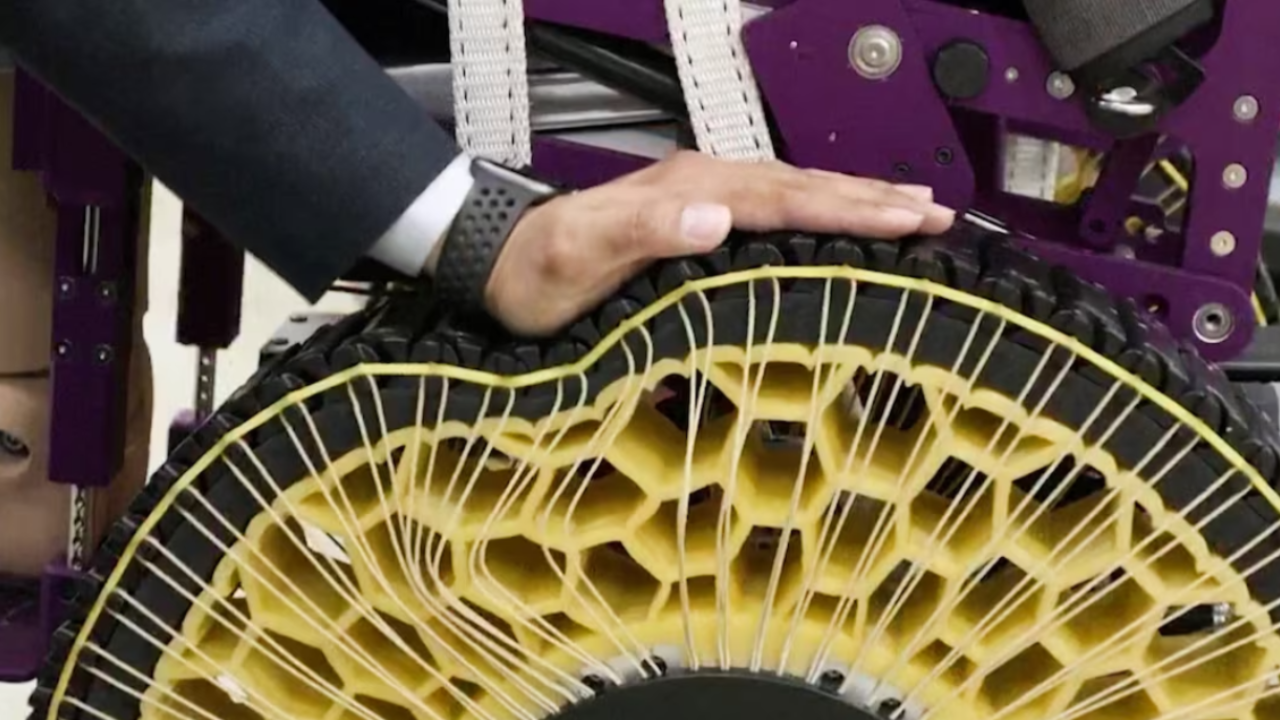
©Reuters TV/via REUTERS
Pre-reading questions:
I will read each question. Then, please answer them.
- How can robots help people in everyday life?
- If you could design a robot, what kind of tasks would you want it to do?
Vocabulary:
I will read the words, meanings, and sample sentences. Then, repeat after me.
- bump /buhmp/
- wire /wahyuhr/
- stiffness /STIF-nis/
- terrain /tuh-REYN/
- industrial /in-DUHS-tree-uhl/
[noun] – a raised area on a surface
The car hit a few bumps on the dirt road.
[noun] – (a piece of) thin metal thread with a layer of plastic around it, used for carrying electric current
The electrician fixed the broken wires in the house.
[noun] – the quality of being rigid or resistant to bending or deformation
The stiffness of the cardboard made it hard to bend.
[noun] – an area of land, when considering its natural features
The rough terrain made it difficult to drive the vehicle.
[adjective] – related to industry, factories, or large-scale production
The city has a large industrial sector that produces electronics.
Article reading:
Please read the whole article. Then, I will check your pronunciation and intonation.
A new invention called the “morphing wheel” has been created by the Korea Institute of Machinery and Materials (KIMM). This wheel is designed to handle obstacles up to 1.3 times its radius, such as curbs, bumps, and stairs. Inspired by the way water droplets change shape, the wheel can switch between solid and fluid states to overcome challenges. It is expected to improve mobility for wheelchairs, delivery vehicles, and robots. In August, the invention was featured on the cover of Science Robotics. Lead researcher Song Sung-hyuk explained that the wheel could reach speeds up to 100 kilometers per hour, matching the speed of a typical car. Unlike current wheels, including airless tires, this wheel offers unmatched adaptability.
The wheel’s design includes a chain-like outer hoop and spoke wires connecting it to the center hub. A sensor adjusts the spokes’ stiffness in real-time, enabling the wheel to adapt to different terrains. KIMM tested the wheel on a prototype wheelchair, which climbed stairs 18 centimeters high while carrying a life-size dummy. It also stayed stable at speeds up to 30 kilometers per hour. The researchers hope to use the wheel in industrial robots and military machines. This innovation could transform transportation and robotics, offering stronger, more efficient, and more versatile mobility solutions for various industries.
The wheel’s design includes a chain-like outer hoop and spoke wires connecting it to the center hub. A sensor adjusts the spokes’ stiffness in real-time, enabling the wheel to adapt to different terrains. KIMM tested the wheel on a prototype wheelchair, which climbed stairs 18 centimeters high while carrying a life-size dummy. It also stayed stable at speeds up to 30 kilometers per hour. The researchers hope to use the wheel in industrial robots and military machines. This innovation could transform transportation and robotics, offering stronger, more efficient, and more versatile mobility solutions for various industries.
Comprehension questions
I will read each question. Then, please answer them based on the article.
- What is the name of the new invention?
- Which organization created the “morphing wheel”?
- What is special about the “morphing wheel”?
- What types of obstacles can the wheel handle?
- What height of stairs did the prototype wheelchair climb?
Discussion questions
I will read each question. Then, please answer them.
- Have you ever seen or learned about an invention that helps people with disabilities? If so, what was it, and how did it work? If not, why do you think such inventions are important?
- Have you heard of any other inventions that adapt to different environments like the morphing wheel? If yes, what was it, and what made it interesting to you? If not, what kind of invention do you think would be helpful in daily life?
- Do you agree that this new wheel could be important for robots and delivery vehicles?
- What are some possible problems with using the “morphing wheel” at high speeds?
- How do you think this invention could change the future of transportation or robotics?